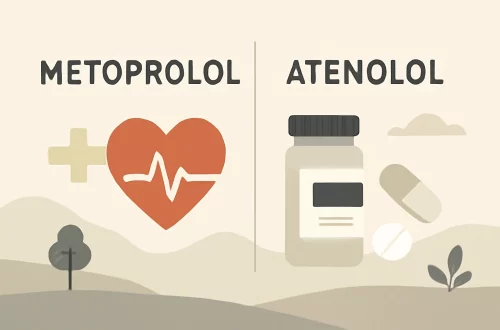
Can a Dog’s Leg Fall Asleep and What You Should Know About It
Dogs are known for their playful nature and boundless energy, but just like humans, they also experience moments of rest and relaxation. However, many dog owners may notice their furry companions exhibiting peculiar behaviors, such as a leg twitching or appearing to “fall asleep” while standing or lying down. This phenomenon can be both amusing and concerning to pet owners. Understanding the intricacies of a dog’s sleep patterns, physical health, and behavior is essential for any dog lover.
As we delve deeper into this topic, it becomes clear that a dog’s leg may indeed exhibit unusual behaviors during sleep or even while awake. This raises questions about what is normal, what might be a cause for concern, and how to best care for our pets during their various states of rest. The way dogs experience sleep and their physical responses can be quite different from those of humans, leading to a variety of interpretations and misunderstandings. In this article, we will explore what it means when a dog’s leg seems to fall asleep, the potential causes behind this behavior, and how to ensure your dog remains healthy and happy.
Understanding Dog Sleep Patterns
To comprehend why a dog’s leg might seem to fall asleep, it’s important to first understand how dogs sleep. Dogs experience two primary stages of sleep: REM (Rapid Eye Movement) sleep and non-REM sleep. During REM sleep, dogs may exhibit twitching, paddling, or even vocalizations, similar to what humans do when dreaming. This stage of sleep is crucial for a dog’s mental health and helps in processing experiences from the day.
In contrast, during non-REM sleep, dogs enter a deeper state of rest where they are less likely to move or react to their surroundings. This is often when a dog appears to be in a deep slumber, and their legs may seem relaxed or even bent at odd angles. It’s during this phase that you might observe a dog’s leg twitching or moving involuntarily, which can be mistaken for a leg falling asleep.
The duration and quality of a dog’s sleep can vary significantly based on factors such as age, breed, and overall health. Puppies and older dogs typically require more sleep than their adult counterparts. For instance, puppies can sleep up to 20 hours a day, while adult dogs may need around 12 to 14 hours. Additionally, large breeds tend to sleep more than smaller breeds due to their higher energy expenditure during play and exercise.
It’s also essential to consider the environment in which your dog sleeps. A comfortable, quiet, and safe space can promote better sleep quality, while a noisy or uncomfortable environment can lead to restless nights. If your dog seems to be having trouble settling in or frequently shifts positions, it may be worth assessing their sleeping area for comfort.
Common Causes of Leg Twitching or Movement
When a dog’s leg twitches or appears to fall asleep, several factors could be at play. While some movements are completely normal and harmless, others may indicate underlying issues that warrant closer examination.
One common reason for leg twitching is the dreaming state during REM sleep. Just as humans might jerk their legs or move while dreaming, dogs can exhibit similar behaviors. This is typically a natural occurrence and not a cause for concern. However, if the twitching becomes more frequent or intense, it might be a sign of an underlying health issue, such as seizures or neurological disorders.
Another potential cause of a dog’s leg moving or seeming to fall asleep could be related to joint or muscle problems. Conditions like arthritis, hip dysplasia, or other musculoskeletal issues can lead to discomfort and unusual leg movements. If a dog is in pain or discomfort, they might shift their position frequently or attempt to adjust their legs in a way that seems abnormal.
Additionally, some dogs may experience anxiety or stress, which can manifest in various physical behaviors, including leg movements. This could be due to environmental factors, such as loud noises or new surroundings, or even separation anxiety when left alone. Understanding your dog’s triggers and providing a calm, reassuring environment can help mitigate these reactions.
Lastly, nutritional deficiencies or imbalances can also play a role in your dog’s physical health. Ensuring your dog receives a balanced diet rich in essential nutrients can support overall health and reduce the likelihood of unusual behaviors.
When to Seek Veterinary Advice
While occasional leg twitching or unusual movements can be a normal part of a dog’s sleep cycle, there are specific scenarios when it is prudent to consult a veterinarian. Monitoring your dog’s behavior closely can help identify whether their leg movements are benign or indicative of a more serious issue.
If your dog’s leg movements are accompanied by other symptoms such as lethargy, loss of appetite, excessive panting, or signs of pain, it’s essential to schedule a veterinary appointment. These signs could point to an underlying health condition that requires immediate attention.
Another concerning signal is the frequency of the twitching or leg movements. If you observe your dog twitching excessively or if the movements last longer than a few seconds, it may be indicative of seizures or neurological issues that necessitate professional evaluation.
Additionally, if your dog appears to be in pain or is reluctant to put weight on a leg, it’s crucial to seek veterinary advice. This could be a sign of an injury, arthritis, or other musculoskeletal conditions that require treatment.
Regular veterinary check-ups can help maintain your dog’s health and catch potential issues before they become significant problems. During these visits, discussing any changes in behavior or physical health with your veterinarian can provide valuable insights and peace of mind.
As a pet owner, your observations and concerns are invaluable. If you ever feel that something is off with your dog, trust your instincts and consult a professional.
Tips for Ensuring Your Dog’s Comfort and Health
Creating a comfortable environment for your dog is crucial in promoting healthy sleep patterns and overall well-being. Here are some practical tips to support your dog’s health and comfort.
First, ensure that your dog has a designated sleeping area that is quiet and free from disturbances. A cozy bed placed in a low-traffic area of your home can help your dog feel secure and comfortable. Consider using orthopedic beds if your dog is older or has joint issues, as these can provide extra support and alleviate pressure on their joints.
Secondly, establish a consistent routine for your dog, including regular feeding and exercise times. This can help regulate their sleep cycle and ensure they receive adequate physical activity, which is particularly important in preventing obesity and related health problems.
Engaging in regular exercise is vital for a dog’s physical and mental health. Activities such as walks, playtime, and interactive games can keep your dog stimulated and reduce anxiety. A well-exercised dog is more likely to settle down quickly and sleep soundly, minimizing unusual behaviors such as leg twitching.
Finally, pay attention to your dog’s diet. Providing a balanced, high-quality diet tailored to your dog’s specific needs can promote overall health and vitality. Consult with your veterinarian about the best nutritional options for your dog’s age, breed, and health status.
In conclusion, while it’s normal for dogs to exhibit interesting behaviors during sleep, it’s essential to stay vigilant and aware of any changes in their movements or overall health. By ensuring their comfort and addressing any concerns proactively, you can help your furry friend lead a happy and healthy life.
**Disclaimer:** This article is for informational purposes only and does not constitute medical advice. For any health-related concerns regarding your dog, please consult your veterinarian for professional guidance.




